I’m sure you’ve seen many dog owners walking their dogs on a retractable dog leash. You may think, wow, that looks like a great way to walk your dog! I’m here to warn of the dangers of the retractable dog leash. I want you to use your critical thinking skills and make the most educated decision on which leash is best for you and your dog.
After reading this post, you may still decide to use the retractable leash, and that’s okay. I’m not here to force your decision. I’m here to give you all the facts so you can make that decision for yourself and your dog.
Let’s dive in.
The Retractable Leash
Your typical retractable leash has a clip to attach to the dog collar and a plastic, semi round handle that holds the leash wire wound around a circular, spring-like contraption. Whenever the pressure of the leash is released, the wire will retract back into the handle. There is also a button that will lock the wire at a certain length.
The retractable leash sounds ideal. The dog is allowed to roam and sniff at his own pleasure and it’s easier on the owner, giving them control on how far their dog is allowed to wander.
I feel it fitting to mention there are warning labels on each retractable leash as well, something similar to this:
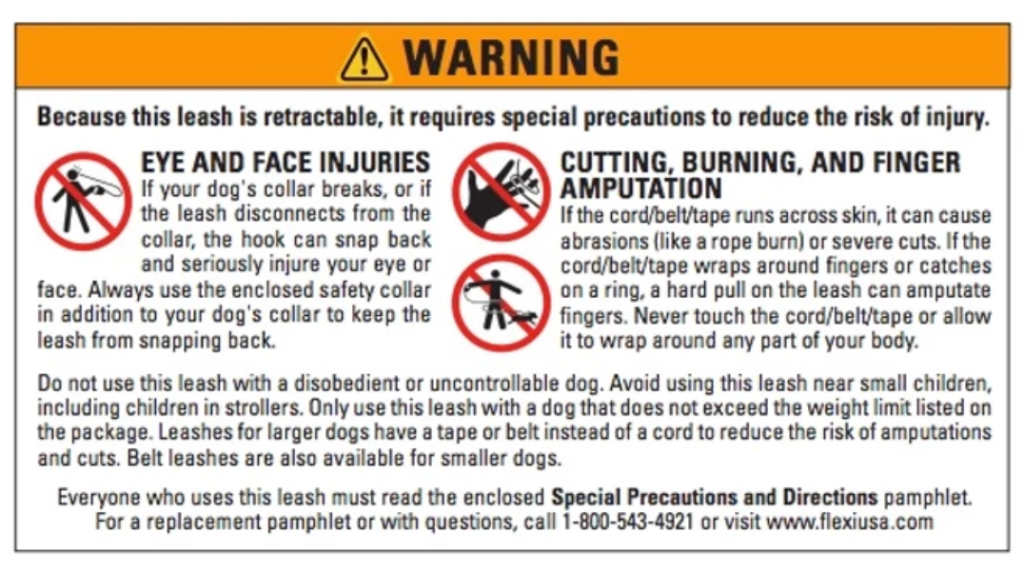
You can read the label for yourself. And I’m going to get up on my soap box for a moment to say always and with everything, read labels. It can be difficult at times to distinguish between what’s true and what’s an advertisement, but always – ALWAYS – read caution and warning labels. They are required by law. They are to ensure you, as a consumer, are aware of the potential dangers of that product.
Onto the dangers!
Physical Injuries
Besides the lacerations or amputations (!) to your fingers or skin the warning label states are possible, there are injuries you can accidentally cause to your dog by using this type of leash.
Let’s imagine, for a moment, you’re out walking your dog. He smells another dog and spots him down the way. He takes off, because he loves meeting new friends! However, you don’t want him to overwhelm the other dog and owner, so you hit the lock button on your retractable leash as your dog sprints ahead.
BAM! He’s yanked to a halt by the lead lock. His collar suddenly crushes his throat, and as his momentum carries him forward, his spine crumples up and causes instant pain. Maybe he yelps! But he gets up again and continues his walk.
Even if nothing serious happened at that moment in time, that was still a traumatic experience for the body. Continuous, halting locks that stop your dog from a dead sprint (or even a slow jog!) can cause physical injuries, such as tracheal or spinal injuries. You might even find yourself at the vet later down the road.
Spinal injuries are especially problematic in long-backed dogs, such as Dachshunds or Corgis. They may be small, but any little tweak could cause injuries or even broken bones!
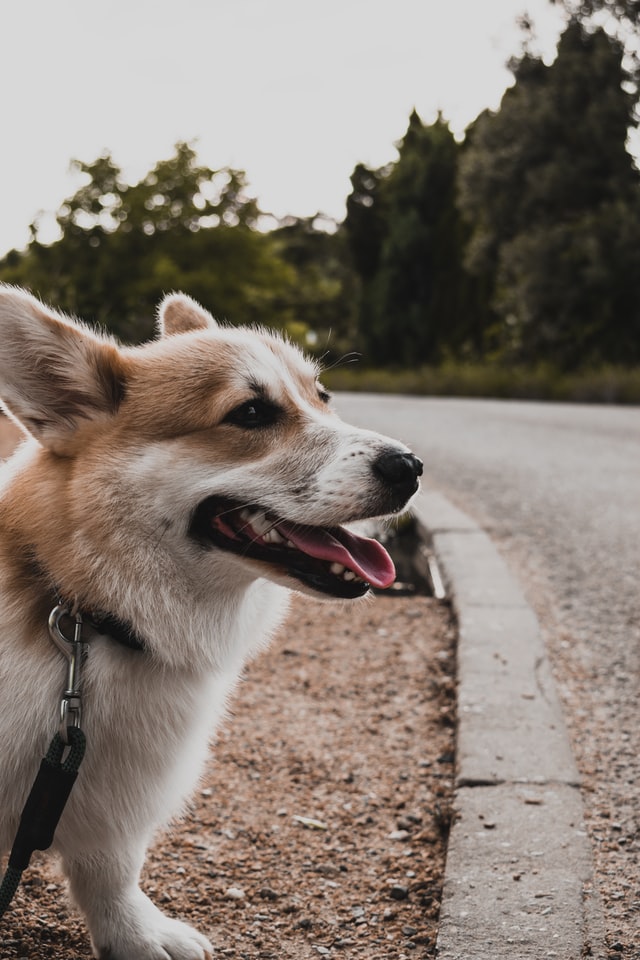
Poor Dog Control
The average length of a retractable leash is about 25 feet. That’s a lot of wiggle room. You may not want to tie your dog down to you, or maybe it’s easier on you to let him do his thing without pulling you along. However, you have very little control over him. To have the best control, you want a leash length of 3-6 feet (depending on a number of factors I will mention in a minute).
You encounter many things when on your walk with your dog. Unfortunately, at least for me, there is a lot of trash and food waste on our walks. Being a Golden, our dog loves to eat. Which means it has taken me quite a long time to train him to leave whatever Weird Thing he found on the ground instead of swallowing it whole. Some days are better than others. But I know when he’s going to try to sneak it because my leash is 3 feet long and I’m right there.
This is not true for dogs who like to roam at the end of a 25-foot retractable leash. Your dog may have sniffed and ate the Weird Thing way before you even noticed its existence. It could have been trash that may cause blockages, it could have been a poisonous food item like grapes or onions (more on that in a future post), or anything in between. The point is, you don’t know, and your dog just ate it.
Rewarding Bad Behavior
The most important item I want to talk about is how the retractable leash does not teach good dog-walking behavior. I’m a stickler for well-trained dogs. It’s safer for you AND your dog, and a well-trained pup is a happy one! So how does this type of leash not teach good walking behavior?
It rewards bad behavior. Essentially, to your dog, the leash is endless. When he smells something, he feels that resistance from the leash and pulls – and is promptly rewarded by being able to sniff the Interesting Thing. This is a continuous cycle on your daily walks. He pulls the lead and is rewarded for it.
A leash is supposed to be loose on a dog walk, meaning your dog is walking relatively close to you. There is no straining or pulling, and no tautness to the leash. This enforces you having control over your dog, where he goes, and what he may get into.
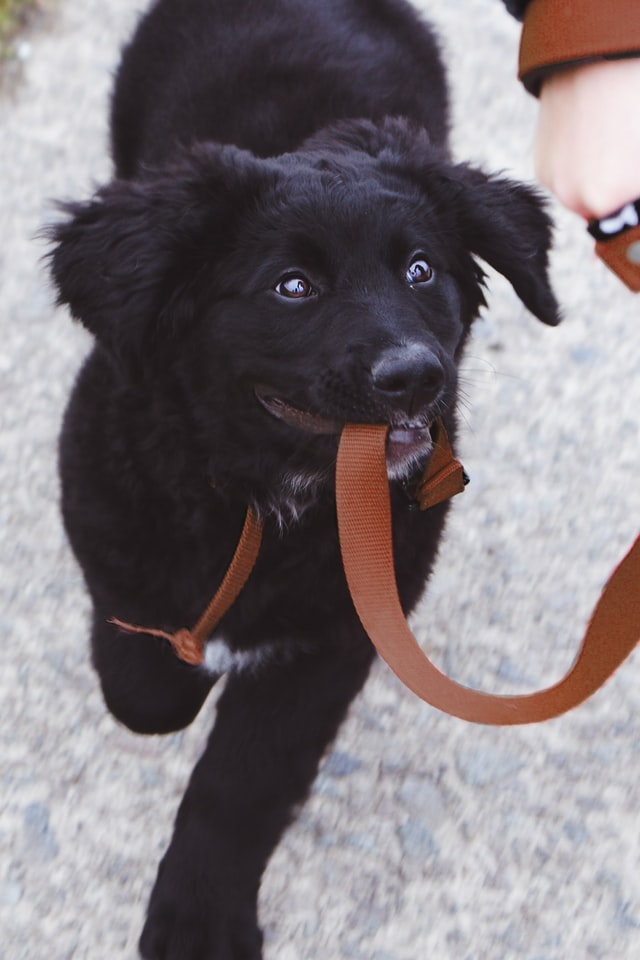
What Should I Use Instead?
What you need to consider when choosing a leash is why you use the leash. A leash:
- Keeps your dog safe on a walk
- Helps you control your dog while on the walk
- Can be used for training purposes
These may be basic concepts, but a lot of us (myself included) forget why a leash is so important!
You also need to consider your size versus your dog’s size. A short person with a tall dog will need a different leash length than a tall person with a short dog, with any variation in between. Leash lengths will also change depending on your dog’s age, size as they grow, and training.
So what should you use?
Everyday Walking & Training
3 – 6 feet
Short enough for proper control but long enough for good sniffing action
These are the types of leashes most people will have. Here are some general guidelines:
- 3 ft = best for control of a taller dog
- 4 ft = best for control of most puppies and dogs
- 3 -4 ft = best for puppies and dogs in training
- 5 – 6 ft = best for trained and/or older dogs
City Walking/Crowded Streets
8 – 12 inches
Short for great control with limited space
Walking on the street in a crowd is tough, let alone with your partner in crime. To have the best control over him and where he goes, and so he doesn’t get trampled on or tangled up, it’s best to have about a 1-foot leash.
Dog Parks or Beaches
10 – 15 feet
Allows for more wiggle room without letting him off the leash
Most people generally let their dogs roam free at a dog-friendly beach. The dog is usually too busy playing in the water to be much of a nuisance. But if you don’t want him to bolt, a longer leash is best. This way he’s still connected to you, but with the open space of the beach, he’s allowed to roam and sniff. Make sure you keep an eye on him!
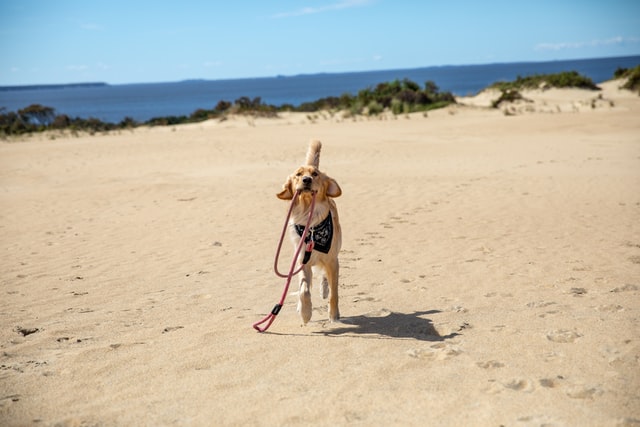
What I Use
We have both a 3-foot leash and a 6-foot leash. We use the 3-foot when we’re on a potty walk around our complex. The 6-foot is for longer walks (used in conjunction with a harness).
The 6-foot has two handles sewn into it: one is at the end, like with your typical leashes, and the second is within a foot of the clip attached to his harness. I use the shorter handle when we cross the street for more control on his direct route of travel. I don’t want him straying or getting distracted. That’s unsafe for both of us! I also use the short handle when we pass by others who seem a little nervous with him. I want to respect their personal space because not everyone is a Dog Person!
Key Points
- The retractable leash may seem ideal, but there are many dangers with using it.
- Read every warning label!
- Using a retractable leash may cause tracheal and spinal injuries, especially in long-backed dogs.
- The average length of a retractable leash is 25 feet and provides very little control over your dog.
- A retractable leash rewards bad dog-walking behavior.
- For everyday walking and training, use a 3-6 ft leash, depending on your dog’s age, size, and training.
My suggestion is to give the good, old-fashioned leash a try! They’re safer, give you more control of where your dog goes (and what he may eat) and overall, you’ll have a better-trained pup on your hands!
Personally, I like leashes like this:
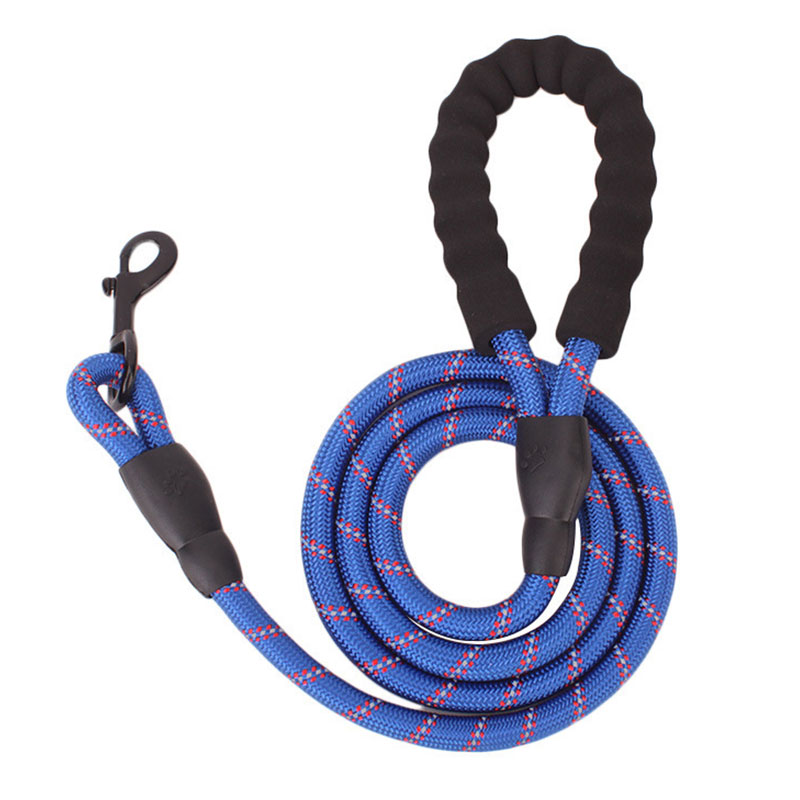
They’re thick, sturdy, and last forever. We’ve had ours since we adopted our dog, which was over two years ago, and it shows absolutely no signs of wear and tear. These leashes are usually shorter and great for training!
I would also suggest trying out a leash with a short and a long handle. I love ours because it gives me more control when needed but also allows our dog to roam a bit more and enjoy himself.
I want to address a few things before we wrap up:
I understand the thought of how your dog is “part of the family” and you want him to be able to enjoy his walk. Maybe you don’t like the sound of “control” and having that over him. But he’s a dog. He does dog things. He’s more durable and way smarter than you think he is, and you being able to control what he gets into or who he encounters is protecting him (and you, in the end).
Be aware when walking your dog. I cannot stress this enough. Don’t be engrossed in your phone. Please. For the safety of you and your dog. Pay attention!
And finally, the decision to choose a retractable leash or a regular leash is ultimately up to you. Remember, safety first!
Peggy
